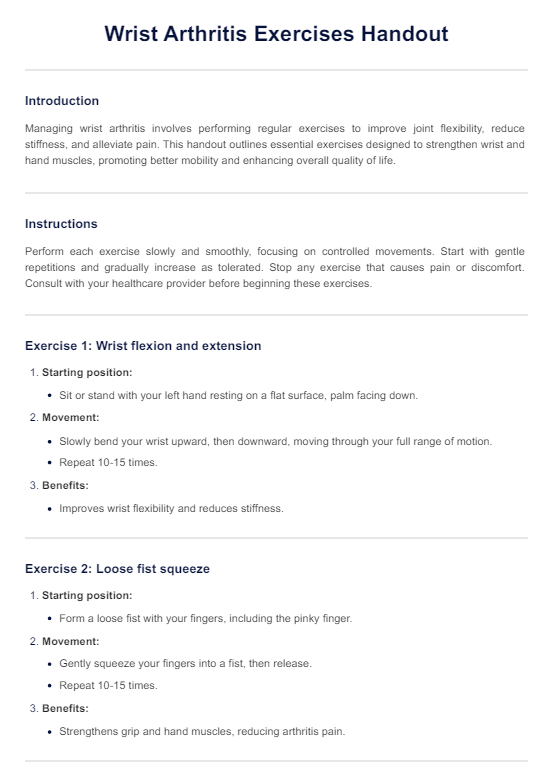Arthritis in the hands can worsen due to factors such as repetitive stress, injury, cold weather, and inflammation triggered by certain foods.

Wrist Arthritis Exercises Handout
Improve your wrist arthritis with these beneficial exercises. Download Carepatron's free PDF handout for examples and guidance on how to perform them effectively.
Use Template
Wrist Arthritis Exercises Handout Template
Commonly asked questions
To slow down arthritis in the hands, maintain a healthy weight, protect joints during activities, use ergonomic tools, and consider medications or therapies recommended by a healthcare provider.
Yes, regular exercise helps arthritis in wrists by improving joint flexibility, strengthening muscles around the wrist, and reducing stiffness and pain.
EHR and practice management software
Get started for free
*No credit card required
Free
$0/usd
Unlimited clients
Telehealth
1GB of storage
Client portal text
Automated billing and online payments











